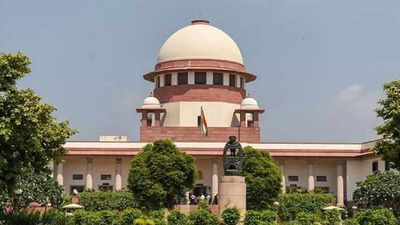Context
-
Recently, the Supreme Court has observed that the suspension of 12 MLAs from the Maharashtra Assembly for a full year is prima facie unconstitutional, and “worse than expulsion”.
-
The SC observed a “constitutional void” and a “hiatus situation” has been created in these constituencies, and the “consequences are dreadful”.
Why were the MLAs suspended ?
- The MLAs had objected to an attempt by state minister to table a resolution demanding that the Centre release data on Other Backward Classes (OBCs), so that seats could be reserved for them in local bodies in Maharashtra.
- Some MLAs allegedly entered acting Speaker’s chamber and threatened, abused, and misbehaved with him.
- The data on the population of OBCs is a political hot button, and the Centre has told the Supreme Court that data on OBCs collected during the Socio-Economic Caste Census (SECC) of 2011 is erroneous and unusable.
- The MLAs filed a writ petition in the Supreme Court last year against the Maharashtra Legislative Assembly and the State of Maharashtra and asked for the suspension to be quashed.
- The petition has submitted that their suspension is “grossly arbitrary and disproportionate”. The challenge relies mainly on grounds of denial of the principles of natural justice, and of violation of laid-down procedure.
- The 12 MLAs have said they were not given an opportunity to present their case, and that the suspension violated their fundamental right to equality before law under Article 14 of the Constitution.
- They have also submitted that they were not given access to video of the proceedings of the House, and it was not clear how they had been identified in the large crowd that had gathered in the chamber.
- The MLAs have also contended that under Rule 53 of the Maharashtra Legislative Assembly Rules, the power to suspend can only be exercised by the Speaker, and it cannot be put to vote in a resolution as was done in this case.
- Rule 53 states that the “Speaker may direct any member who refuses to obey his decision, or whose conduct is, in his opinion, grossly disorderly, to withdraw immediately from the Assembly”. The member must “absent himself during the remainder of the day’s meeting”.
- Should any member be ordered to withdraw for a second time in the same session, the Speaker may direct the member to absent himself “for any period not longer than the remainder of the Session”.
What has Maharashtra said in its defence?
- Article 212: The House had acted within its legislative competence, under Article 212, and courts do not have jurisdiction to inquire into the proceedings of the legislature.
- Article 212 (1) states that “The validity of any proceedings in the Legislature of a State shall not be called in question on the ground of any alleged irregularity of procedure”.
- Article 194: The state has also referred to Article 194 on the powers and privileges of the House, and argued that any member who transgresses these privileges can be suspended through the inherent powers of the House.
- It has denied that the power to suspend a member can be exercised only through Rule 53 of the Assembly.
Key Observations of the Supreme Court
- The basic structure of the Constitution would be hit if the constituencies of the suspended MLAs remained unrepresented in the Assembly for a full year.
- The bench referred to Article 190 (4) of the Constitution, which says, “If for a period of sixty days a member of a House of the Legislature of a State is without permission of the House absent from all meetings thereof, the House may declare his seat vacant.”
- Under Section 151 (A) of The Representation of the People Act, 1951, “a bye-election for filling any vacancy shall be held within a period of six months from the date of the occurrence of the vacancy”.
- The Supreme Court said that the one-year suspension was prima facie unconstitutional as it went beyond the six-month limit, and amounted to “not punishing the member but punishing the constituency as a whole”.
- The Supreme Court is expected to rule on the question of whether the judiciary can intervene in the proceedings of the House. Constitutional experts, however, say that the court has clarified in previous rulings that the judiciary can intervene in case of an unconstitutional act done by the House.
What are the rules on the length of suspension of a Member of Parliament?
- Rules 373, 374, and 374A of the Rules of Procedure and Conduct of Business in Lok Sabha provide for the withdrawal of a member whose conduct is “grossly disorderly”, and suspension of one who abuses the rules of the House or willfully obstructs its business.
- The maximum suspension as per these Rules is “for five consecutive sittings or the remainder of the session, whichever is less”.
- The maximum suspension for Rajya Sabha under Rules 255 and 256 also does not exceed the remainder of the session. Several recent suspensions of members have not continued beyond the session.
- Similar Rules also are in place for state legislative assemblies and councils which prescribe a maximum suspension not exceeding the remainder of the session.
Visit Abhiyan PEDIA (One of the Most Followed / Recommended) for UPSC Revisions: Click Here
IAS Abhiyan is now on Telegram: Click on the Below link to Join our Channels to stay Updated
IAS Abhiyan Official: Click Here to Join
For UPSC Mains Value Edition (Facts, Quotes, Best Practices, Case Studies): Click Here to Join


